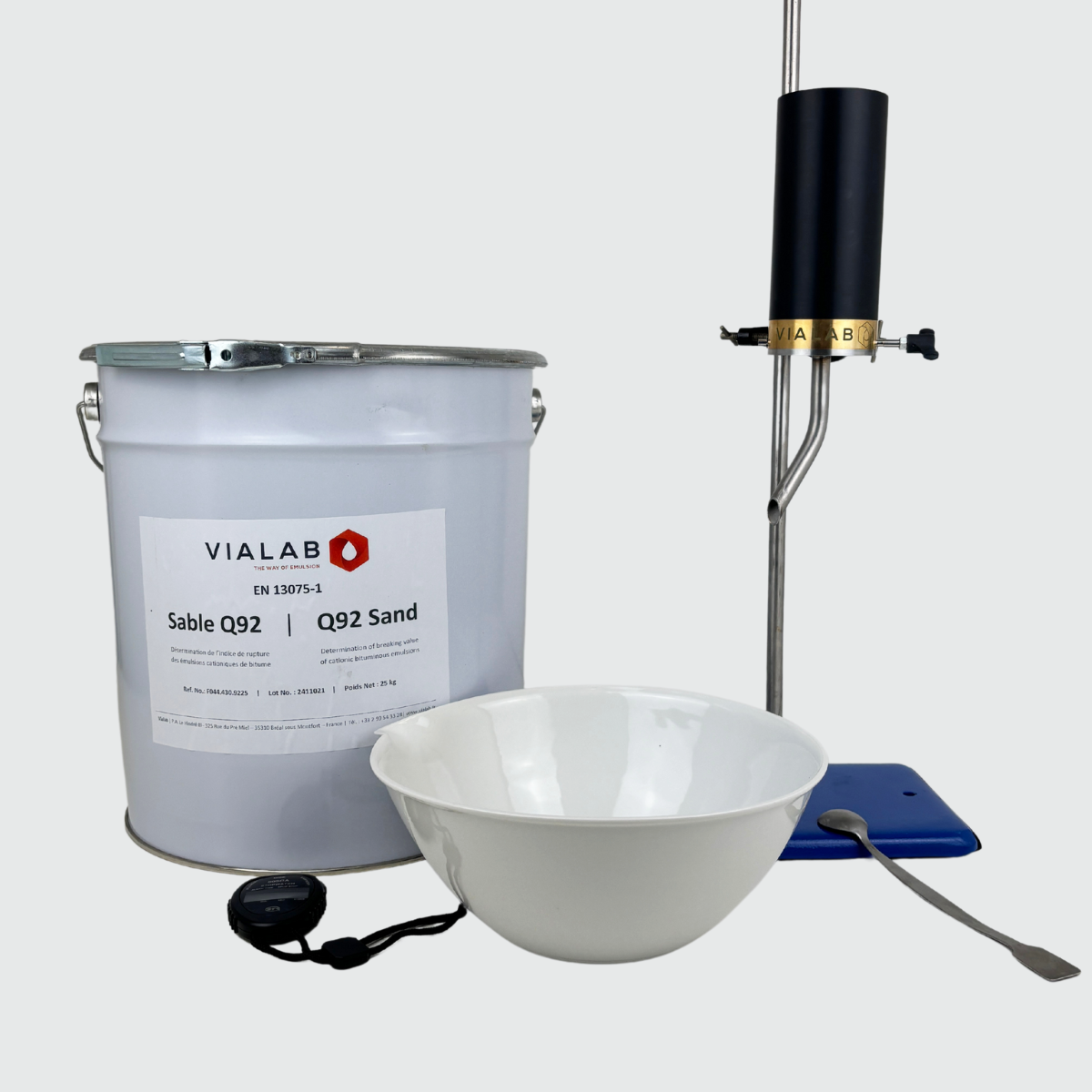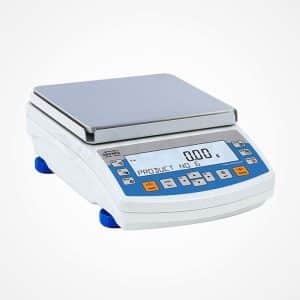COMPLETE SET
Vialab has designed and manufactured a Breaking Index hopper or manual fine distributor which allows and guarantees the continuous and optimal flow of Q92 filler in compliance with the specifications of the test standard NF EN 13075-1. The shape of its flow cone, designed to contain a maximum quantity of filler, its rotary axis of opening / closing of the calibrated orifice, as well as its bent and 360 ° orientable release tube are the culmination of several years of use in our laboratory, feedback from our customers. The filler flows without vibration, at the flow rate of the standard, a few centimeters above the emulsion, for high comfort of use.
This manual flow hopper can be used in both the manual and semi-automatic operating modes, in combination with a digital propeller agitator.
EN 13075-1 | MANUAL SET
Specifications
- Manual fine dispenser F044.145.0010
- Internal flow control certificate
- Unique serial number – Laser engraving
- Stand F039.205.0271
- Double clamping nut F039.205.0010
- Ø254 mm porcelain capsule F039.215.0750
- Stainless steel spoon spatula F039.230.1210
- Stopwatch F007.255.0017
* Q92 sand must be ordered separately
F044.145.0020
PRODUITS
MANUAL FINE DISPENSER
Specifications
- 2020 model
- Structure in black HDPE
- Suitable for semi-automatic device
- Cylindrical hopper with conical interior for optimized flow
- Opening system closing axis.
- Lower plate in stainless steel
- Stainless steel fine drainage tube bent at 45 °, adjustable 360 °
- Stainless steel rod., 12 × 200 mm
- Assembly by stainless steel screws
- No collage
- Continuous flow between 0.30 and 0.40 g / s
- Certificate of individual internal flow control
- Device identified by laser marking
F044.145.0010
VIBRATING FINE DISPENSER
Specifications
- 2.8 L volume input hopper
- Powerful drive for uniform material feeding
- Variable flow and height adjustment of the material bed
- Digital speed control
- Digital time setting
- Compact control and power unit
- 15 mm chute with support
- Easy-to-clean clip-on chutes
The fines are loaded into the feed chute through the hopper. This is oscillated at 50 (or 60) Hz by two electromagnets. The volume current is infinitely adjustable. The layer height can be adjusted according to the product and needs.
F197.145.0001
PORCELAIN CAPSULE | Ø254 mm
Specifications
- Flat bottom
- Diameter : 254 mm
- Height : 105 mm
F039.215.0750
STAINLESS STEEL CAPSULE | Ø200 mm
Specifications
- Flat bottom
- Diameter : 200 mm
- Rolled edge
F010.216.0200
STAND | 250 x 160 x 600 mm
Specifications
- Blue painted cast iron base 250 x 160 mm
- Stainless steel rod Ø12 x 600 mm
- M10 thread + clamping nut
F039.205.0271
SPOON SPATULA
Specifications
- Stainless steel
- Overall length 210mm
- One spoon end
- One flat spatula end
F039.230.1210
PROPELLER AGITATOR
Specifications
- Digital screen
- Speed adjustment from 50 to 2200 rpm
- Analog speed adjustment
- Max volume 20 L 40 L
- Viscosity max. (mPas) 10,000 50,000
- Suction of the mixture from top to bottom.
- Localized shear.
- Produces an axial flow of the mixture in the container.
- Use with medium to high speeds.
- Stand included F039.118.2080
F039.118.6031
METALLIC CONTAINER
Specifications
- Beaker with handle | 500 ml
- Stainless steel
- Ø 90 mm
- Height 90 mm
F044.145.5358
STIRRING ROD 4 FIXED ARMS | Ø 70 mm
Specifications
- Stainless steel stirring rod
- 4 fixed fins
- Ø Wingspan 70 mm
- Ø Stem 8 mm
- Rod length 500 mm
F144.118.7500
STOPWATCH 1/100e
Specifications
- Fonction date & clock
- Start – Stop – Reset
- 00h00…24h00
- Precision 1/100e on 30 min
- Memory / 2 times
F007.255.0017
REFERENCE FINES | EN 13075-1
Q92 | 25 KG
Specifications
- COFRAC batch size analysis certificate (Included in the bucket)
- Lot identification on each bucket
- Hermetic metal bucket with strapping ring and handle
- EN 13075-1
- Sampled
- Thames
- Homogenized
- Net weight: 25 kg
F044.430.9225
FORSHAMMER | 10 KG
Specifications
- Hermetic stackable bucket
- Certificate of product and batch analysis
F111.430.0001


















